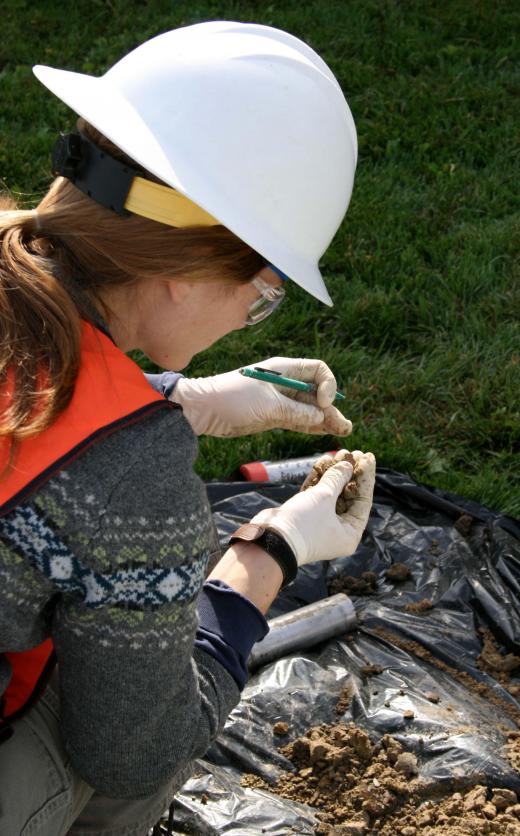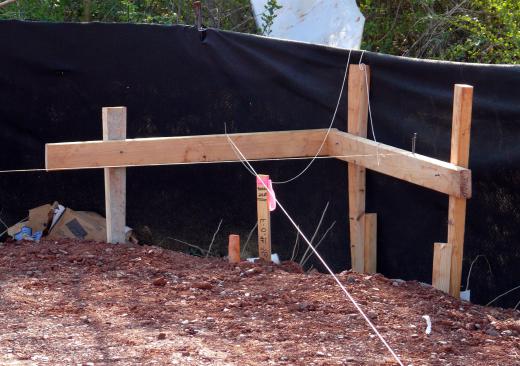What Is a Consolidation Test?
A consolidation test, also called an oedometer test, is a measurement of how soils compress when saturated with water and exposed to varying amounts of load, or varying weights of the soil. Saturated conditions exist when water is added until no more can be absorbed by the soil. Soil testing is performed both for understanding of existing soil conditions and for determining acceptable load factors when building foundations are being built.
The test uses a saturated soil sample placed in a metal ring open at the top and bottom. Samples are compressed between two porous stones with increasing weights, with the height of the sample measured as the weight changes. Porous stones allow water to pass through them while maintaining strength to resist the testing load. Water is added to the soil during the test to maintain a fully saturated soil.

As the soil is placed under a load, the water is forced out of voids or gaps in the soil structure. The consolidation test measures how the soil compacts as the water is forced out. This test is important because building foundations may not be deep enough to reach bedrock, or rock layers may not be present where construction will take place. Architects and building engineers need to understand how the soil will respond to compression, or the weight of the building structure pressing down.

A soil consolidation test is considered one-dimensional, because the sample is placed in a metal ring that prevents soil movement to the sides. The load compression is axial, or from the top direction and moving down in a straight line, so there are soil characteristics not determined by this test. One factor not tested by this method is shear strength, which is a measurement of soil resistance to a side-to-side or tearing load.
Measuring soil characteristics can also provide data for geologists to study soil history. A consolidation test will show different results for newly deposited soils versus older soils. Land will compress naturally over time, and effects from glaciers or lakes no longer present can create further soil compression.
Another factor when reviewing consolidation test data is the amount of swelling or rebound that can occur if the load is removed. If construction occurs on soils containing a great deal of water, and the loads change such as occurs on bridges or other structures, the soil can swell if the load has not fully compressed the soil. These changing soil conditions could damage foundations and structures, so it is important to understand the soil behavior if loads are added or removed.
AS FEATURED ON:
AS FEATURED ON:












Discussion Comments
Post your comments